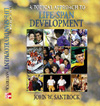 |  Life-Span Development: A Topical Approach John W. Santrock
Socioemotional Processes and Development Gender and Sexuality
Learning Objectives1.Discuss gender within the context of its biological, cognitive, and social influences, including such factors as gender roles and gender typing. |
 |  |  | 2.Consider issues of gender comparisons, including:- the widespread use of gender stereotypes
- the actual physical differences between males and females
- the small or nonexistent cognitive differences
- some socioemotional differences
- the controversy about gender similarities and differences, noting the importance of context
|
 |  |  | 3.Describe gender-role classification, particularly the current interest in androgyne and gender-role transcendence; the role that gender plays in relationships, self-development, and role strain; and gender development and aging, particularly with respect to the transition points for learning gender roles in the toddler years and adolescence and Guttman's proposed parental imperative. |
 |  |  | 4.Understand the role of biological and cognitive factors in sexuality, looking at both sex hormones and the influence of cultural factors on sexual motivation. |
 |  |  | 5.Explain the issues surrounding sexual orientation, including:- the increase in conservative attitudes toward sex seen in the 1994 Sex in America Survey
- acceptance of sexual orientation as running along a continuum
- that sexual orientation is likely the result of a combination of genetic, hormonal, cognitive, and environmental factors
|
 |  |  | 6.Describe sexually transmitted diseases, including:| gonorrhea | syphilis | | chlamydia | genital herpes | | HPV | AIDS |
|
 |  |  | 7.Discuss how forcible sexual behavior (i.e., rape) and sexual harassment have become increasing problems. |
 |  |  | 8.Relate the development of sexuality in childhood and adolescence, noting that:- most children engage in sexual play, mainly motivated by curiosity
- the factors involved in mastering sexual feelings and forming a sense of identity
- the progression and prevalence of sexual behaviors from kissing to sexual intercourse
- the risk factors for sexual problems, such as early sexual activity, not using contraceptives, and poverty
- despite an increase in the number of adolescents who are using contraceptives, many still do not, resulting in more than 25 percent of sexually active adolescents having an STD
- the high rate of adolescent pregnancy in the United States and the negative consequences for the mother and her offspring
|
 |  |  | 9.Explore sexuality in middle and late adulthood, noting that most menopausal women do not have serious physical or psychological problems, the benefits of hormone replacement therapy, the issues of hormonal changes in men, and the sexual changes (particularly for men) that occur in late adulthood. |
|



 2002 McGraw-Hill Higher Education
2002 McGraw-Hill Higher Education